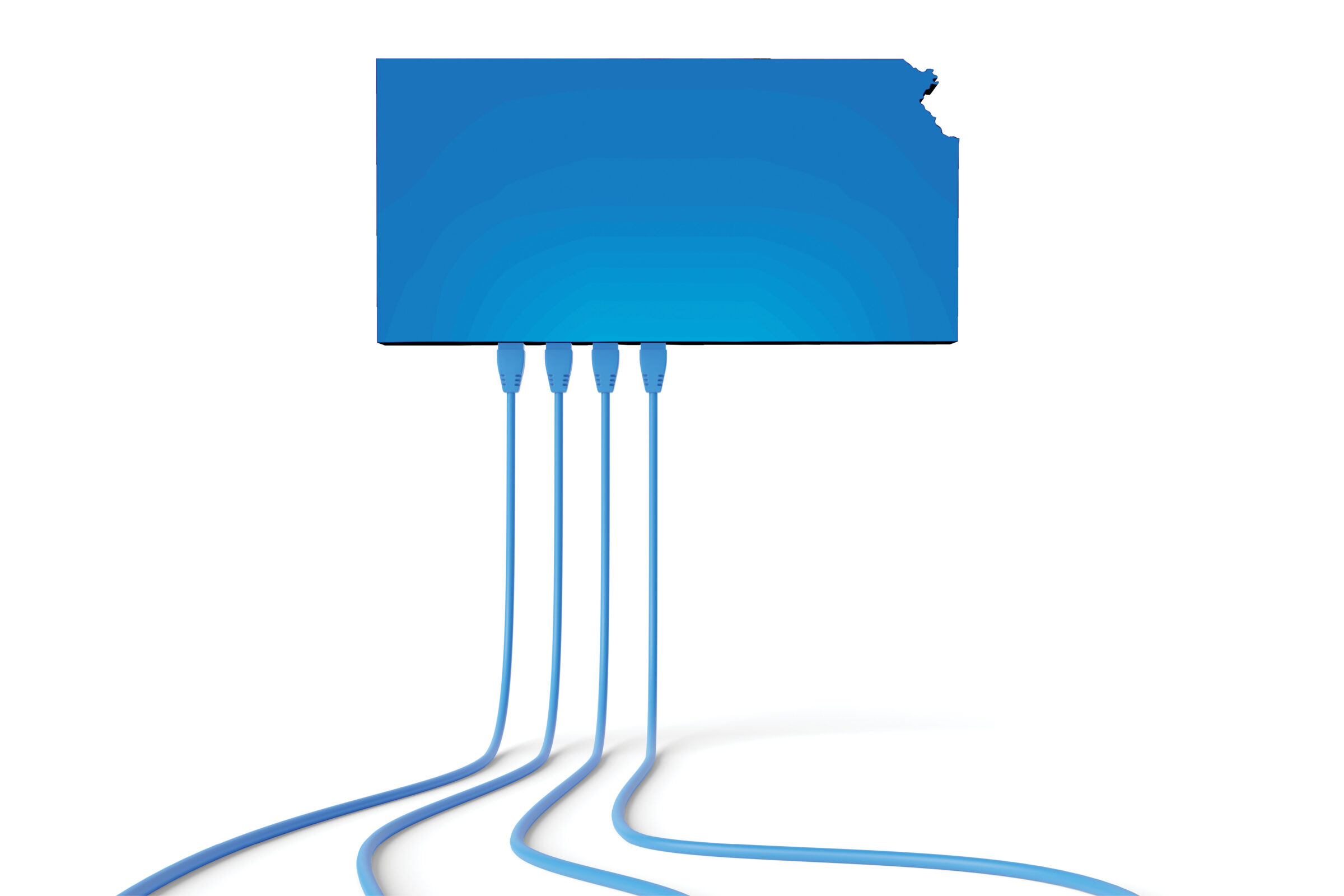More than 150,000 Kansans do not have access to high-speed internet, according to the Kansas Office of Broadband Development (KOBD), an agency created by Governor Laura Kelly in 2020 that resides in the state’s Department of Commerce. Lack of access is due mainly to unserved or underserved Broadband Serviceable Locations, low enrollment in the state’s Affordable Connectivity Program and residents without access to internet-ready devices.
“Access to reliable high-speed internet is no longer a luxury — it’s a necessity for education, healthcare, economic growth and overall quality of life,” said Governor Kelly in August when KOBD submitted its Broadband Equity Access and Deployment (BEAD) Five-Year Action Plan (FYAP) to the National Telecommunications and Information Administration (NTIA). “This plan moves us toward achieving universal broadband availability in Kansas, ensuring everyone from business owners to students can succeed in today’s digital age.”
“We are empowering communities with high-speed broadband infrastructure, unlocking greater economic growth, increased access to telemedicine and expanded educational opportunities.”
— Laura Kelly, Governor of Kansas
NTIA has allocated $451 million to Kansas to support the state’s broadband initiatives; it requires a five-year action plan outlining how the state will use the funds.
Action Plan Objectives
KOBD’s BEAD plan has four main objectives, each of which has specific goals and metrics for achieving them. The first is ensuring broadband coverage to all of the state’s businesses, homes, farms and community anchor institutions. Second is to apply what it calls future-proof technologies for broadband accessibility and use. The third is to evolve Kansas’ digital economy with broadband certifications, training programs and career pathways. Fourth is to enable residents to work or learn from any location in the state.
When fully implemented, BEAD will benefit education with digital learning, transportation with smart traffic systems and connected vehicles, commerce in terms of business development and remote working, healthcare through remote diagnostics and telehealth, and agriculture with smart farming and Internet-enabled equipment, among other broadband applications.
“The BEAD FYAP outlines a strategic approach to leverage existing programs, partnerships and resources toward the goal of universal broadband access,” said Kansas Lieutenant Governor and Secretary of Commerce David Toland in the BEAD announcement. “By combining public and private efforts, we can maximize the impact of our investments and create a robust broadband infrastructure that supports economic growth and innovation for decades to come.”
Resources for Statewide Broadband
In May, Governor Kelly established the Lasting Infrastructure and Network Connectivity (LINC) program that makes $30 million available for initiatives that build infrastructure for delivering broadband to homes and businesses throughout Kansas. LINC is designed to lower internet costs and improve performance and availability. Funding is intended to support three types of infrastructure: broadband that enables internet access at 100/20 Mbps or higher speeds, internet exchange points and middle-mile broadband infrastructure. Service providers bring matching funds to the program, boosting overall funds to nearly $34 million.
In November, 12 broadband infrastructure providers in locations across Kansas were granted LINC awards worth $28.5 million. More than 2,300 premises, or customers of the service providers, will benefit from the grants.
“LINC is another step forward in our promise to connect all Kansans, including in rural areas, to high-speed internet,” said Governor Laura Kelly in a statement. “We are empowering communities with high-speed broadband infrastructure, unlocking greater economic growth, increased access to telemedicine and expanded educational opportunities.”
In June, Kansas launched the Broadband Acceleration Grant Program 3.0 with $5 million from the Eisenhower Legacy Transportation Program to bridge the state’s digital divide. The application period took place during the summer, and applicants included a variety of authorized broadband service providers. The program is designed to deliver high-speed internet to areas with insufficient broadband access and economically challenged areas.
“We recognize the urgent need to bridge the digital divide so households and businesses across Kansas can succeed now and in the future,” said Lieutenant Governor Toland at the grant program announcement. “With the wide range of entities that are eligible for these funds, we are encouraging collaboration and innovative approaches to getting more Kansans and communities connected.”

